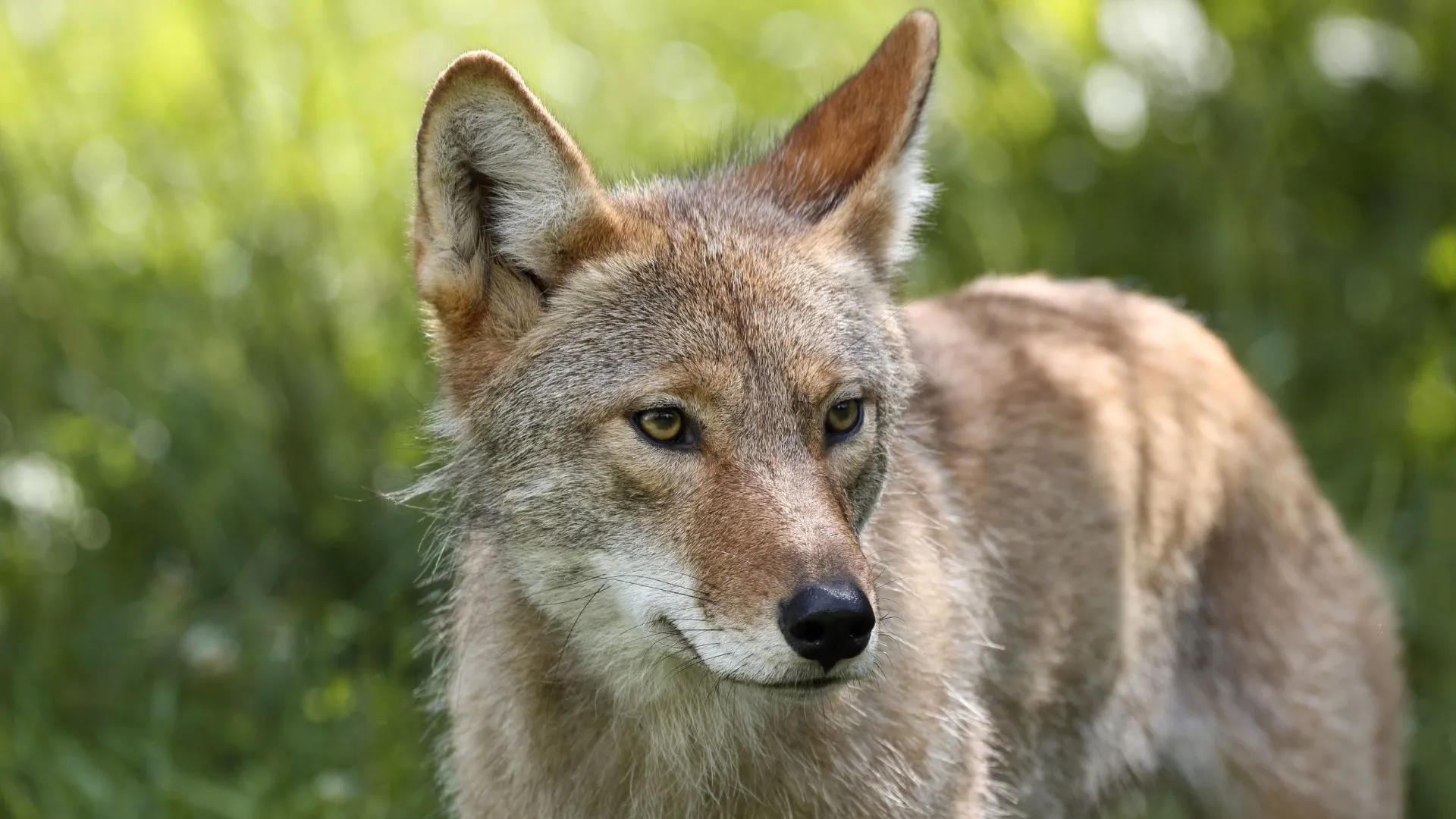Let’s journey into the captivating world of animals inhabiting temperate climate zones. These zones, with their moderate temperatures, span the globe, harboring a diverse array of creatures, from majestic mammals like moose and elusive lynx to vibrant bird species like cardinals and soaring eagles. These animals have mastered the art of survival amidst changing seasons, adapting to the challenges of finding food, shelter, and navigating a dynamic climate.
Temperate Climate Zone Animals: Masters of Adaptation
Temperate climates, characterized by their balanced temperatures—neither excessively hot nor unbearably cold—provide a haven for a remarkable diversity of life. These zones, encompassing regions across the globe, teem with a rich tapestry of fauna, including furry mammals, colorful birds, slithering reptiles, and hopping amphibians. Picture majestic moose gracefully navigating forests, elusive lynx stealthily stalking their prey, or powerful pumas perched atop rocky outcrops. The avian world is equally captivating, with bright red cardinals flitting through branches and bald eagles commanding the skies. Even the undergrowth teems with life, with ornate box turtles and skunks scurrying through the undergrowth.
But these animals aren’t merely surviving; they’re thriving. They’ve developed incredible adaptations to cope with the ever-changing seasons. Migration is one such remarkable strategy. Have you ever wondered why certain birds grace us with their presence only at specific times of the year? These avian travelers embark on epic journeys, swapping chilly winters for warmer climates where food is abundant. Then there are the champions of slumber – the hibernators. Animals like certain squirrel species and bears have elevated “winter break” to an art form, soundly sleeping through the coldest months, only to awaken with the arrival of spring.
You might envision temperate zones as chaotic, given their diverse inhabitants. However, a fascinating order underpins this diversity. It’s all about plants! Similar vegetation structures in different temperate regions, even those thousands of miles apart, create strikingly similar habitats. This phenomenon leads to fascinating parallels between the animals inhabiting, for instance, a North American forest and a European one, even though the specific species might differ.
Scientists are continuously unraveling the mysteries of these intricate ecosystems. They’re delving into the subtle yet crucial ways animals adapt to regional climate differences within the temperate zone. They’re comparing animal communities in different temperate regions to understand the factors contributing to their uniqueness. Furthermore, they’re studying the impact of human activities on these delicate balances, striving to find ways for us to coexist harmoniously with the incredible animals that call temperate zones home.
To fully delve into the complexities of temperate climate zone animals, it is essential to grasp the fundamental concept of a temperate maritime definition.
Here are some common questions about temperate climates:
| Question | Answer |
|---|---|
| What are some common animal adaptations in temperate climates? | Migration and hibernation, just to name a few! |
| Where are temperate climate zones located? | They’re found across the globe, nestled between the tropical and polar regions. |
| What factors influence the diversity of temperate climate zone animals? | A combination of factors: geographic location, the types of plants growing there, and the impact of human activities. |
Exploring the Diverse Fauna: A Closer Look at the Inhabitants
We’ve established that temperate zones experience significant temperature fluctuations—scorching summers and frigid winters. This begs the question: how do animals endure these extremes? The answer lies in their resilience. Over time, these creatures have honed ingenious adaptations to not just survive but thrive amidst the ever-changing seasons and the challenges they bring.
Consider deer and rabbits, diligently munching on lush greenery throughout spring and summer. These herbivores epitomize opportunistic feeding, taking full advantage of the seasonal bounty. However, nature thrives on balance, which is where predators like wolves and owls come into play. These skilled hunters regulate herbivore populations, ensuring a delicate dance between predator and prey across the temperate landscape.
Here’s a fascinating observation: while the specific animals inhabiting temperate forests might differ globally, they often play similar roles in their respective ecosystems. It’s as if nature has a blueprint for a thriving forest, casting different actors in different locations!
Let’s explore some of these ingenious survival strategies in more detail:
- Hibernation: Envision a slumbering bear, tucked away in its den, riding out the winter. That’s hibernation in essence. By drastically slowing down their metabolism and drawing energy from stored fat reserves, animals like bears transform winter from a challenge into a prolonged nap.
- Migration: Some animals are simply not built for the cold. Birds are a prime example. As winter approaches, they embark on epic journeys, following the trails of food and sunshine to warmer climates. This arduous journey is a testament to their endurance.
- Specialized Diets: Ever witnessed a squirrel diligently burying nuts? They’re not merely exhibiting forgetfulness; they’re engaging in the crucial task of caching food. Animals like squirrels and jays have mastered the art of storing food, ensuring a supply to sustain them through even the harshest times.
From cunning predators to resourceful food hoarders, the animals inhabiting temperate climates showcase nature’s creativity. They’ve adapted, evolved, and discovered ways to thrive in the face of constantly changing conditions. It’s a poignant reminder of the incredible resilience of life on Earth.
Key Lines about Temperate Climate Zone Animals:
- Diversity: Temperate climate zones support a wide array of animal species, including moose, lynx, pampas deer, bats, field mice, pumas, foxes, cardinal birds, eagles, black bears, anoles, skunks, barbets, hares, marmots, snapping turtles, white-tailed deer, ornate box turtles, North American river otters, fox squirrels, and eastern gray squirrels.
- Adaptations: These animals exhibit remarkable adaptations to tolerate seasonal changes, such as migration to escape harsh winters or hibernation to conserve energy during periods of food scarcity.
- Distribution: Temperate climate zones are found across the globe, including North America, Europe, Asia, South America, and Australia. These zones occupy the mid-latitudes, lying between the tropics and the polar regions.
- Ecological Niches: The unique vegetation structure of temperate forests, particularly, provides similar ecological niches for different species. This results in diverse yet comparable faunal communities, with species fulfilling similar ecological roles despite often being different species.
Adaptations for Survival: Weathering the Seasons
We’ve established the challenging nature of temperate zones, with their extreme temperature swings. Yet, animals have not only found ways to survive but also to thrive in these environments. Let’s delve into the fascinating world of animal adaptations in temperate climates.
Physical Adaptations:
- Insulation: As winter approaches, many animals, like foxes and owls, grow a thick coat of fur or feathers. This natural insulation acts like a built-in winter jacket, helping them conserve heat.
- Snow Navigation: Animals like the snowshoe hare have evolved larger paws, perfect for distributing their weight and hopping across the snow without sinking.
Behavioral Adaptations:
- Hibernation: When temperatures plummet and food becomes scarce, some animals resort to hibernation. Bears are the quintessential hibernators, spending the winter in a state of dormancy, their metabolic rate significantly reduced. Bats also hibernate, often seeking refuge in caves until warmer weather returns.
- Migration: Birds are renowned for their epic migrations. When winter sets in, they fly thousands of miles to warmer climates where food is more abundant. These journeys are a testament to their endurance and navigation skills.
- Food Hoarding: Squirrels and chipmunks are masters of planning ahead. During the autumn, they diligently gather and store nuts and seeds, creating a vital food cache to see them through the lean winter months.
These adaptations, from growing thicker fur to essentially sleeping through winter, underscore the resilience of nature. It’s a constant reminder that life finds a way, even in the face of adversity. These animals have crafted ingenious solutions to cope with the ever-changing seasons, ensuring their survival and enriching the biodiversity of our planet.
The Impact of Human Activities: Threats to a Delicate Balance
Temperate climates, as we’ve discovered, are teeming with life. However, human activities are casting a shadow over these once-pristine ecosystems. It’s crucial to understand how our actions impact the animals that call these places home.
Habitat Loss and Fragmentation:
- Deforestation: When forests are cleared for farmland or urban development, we’re essentially destroying the homes and food sources of countless animals. Deforestation disrupts the delicate balance of predator-prey relationships and forces animals into smaller, more vulnerable territories.
- Fragmentation: Roads and other infrastructure carve up habitats, isolating animal populations and making them more susceptible to disease and genetic issues.
Climate Change:
- Shifting Temperatures: As global temperatures rise, animals adapted to specific temperature ranges face unprecedented challenges. Some species might need to shift their ranges to find suitable climates, potentially leading to competition for resources.
- Altered Precipitation Patterns: Changes in rainfall can disrupt breeding cycles and food availability for many animals. Droughts and floods can be particularly devastating.
Pollution:
- Air and Water Contamination: Industrial emissions, vehicle exhaust, and agricultural runoff pollute the air and water, harming animals directly and accumulating in the food chain.
- Chemical Exposure: Pesticides and other toxins can harm animals, weaken their immune systems, and disrupt their reproductive cycles.
Invasive Species:
- Competition and Predation: Humans often unintentionally introduce non-native species, which can outcompete or prey upon native animals, disrupting delicate ecological balances.
- Disease Transmission: Invasive species can bring new diseases to which native animals have no immunity, leading to population declines.
It’s evident that our actions have far-reaching consequences for temperate climate zone animals. If we want these incredible creatures to thrive, we must rethink our relationship with the environment. Reducing our impact on these ecosystems through sustainable practices is crucial to ensure a healthier future for all.
- SYBAU See You Baby Meaning: Gen Z Slang Evolves - July 1, 2025
- Unlock Your Inner Youth: Lifestyle Secrets for a Vibrant Life - July 1, 2025
- Decode SYBAU Meaning: Gen Z Slang Explained - July 1, 2025







Comments are closed.